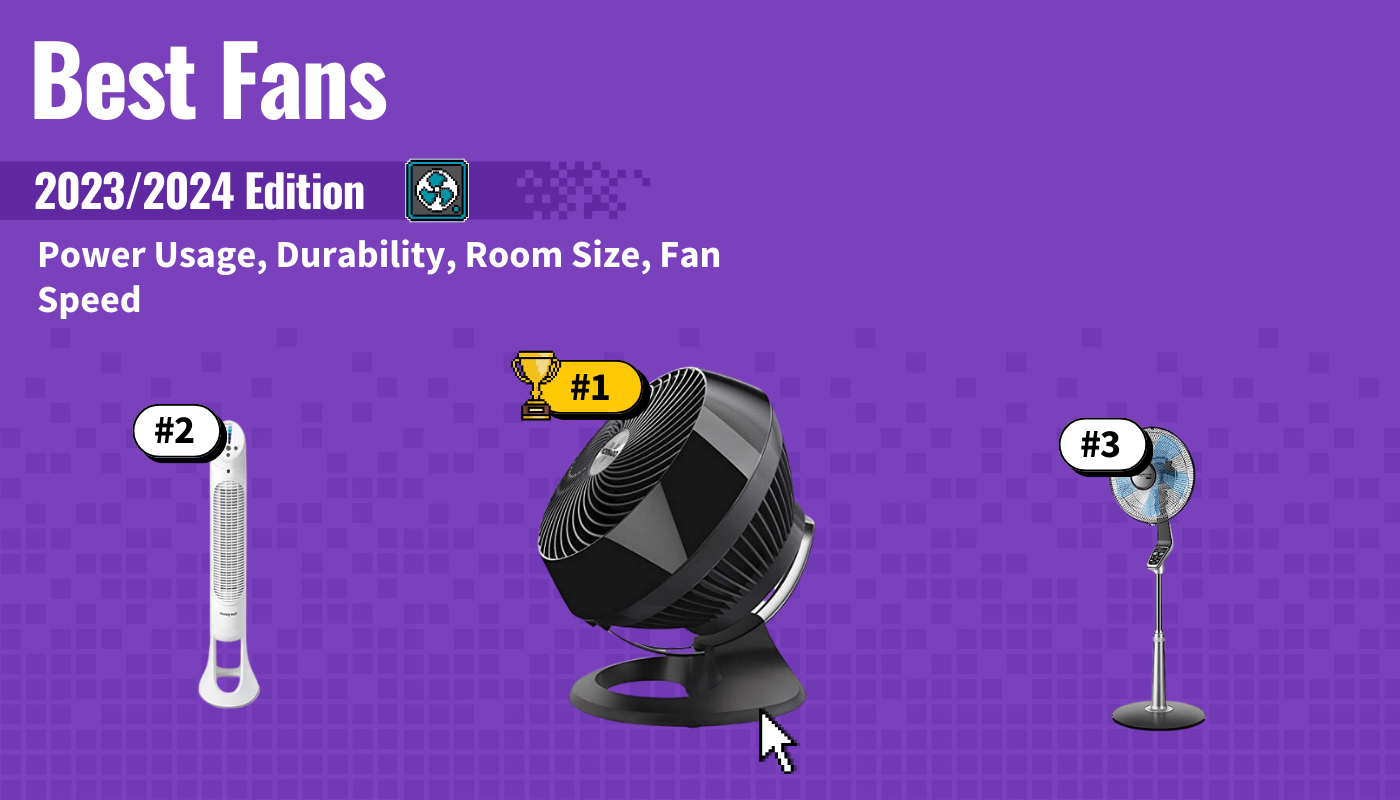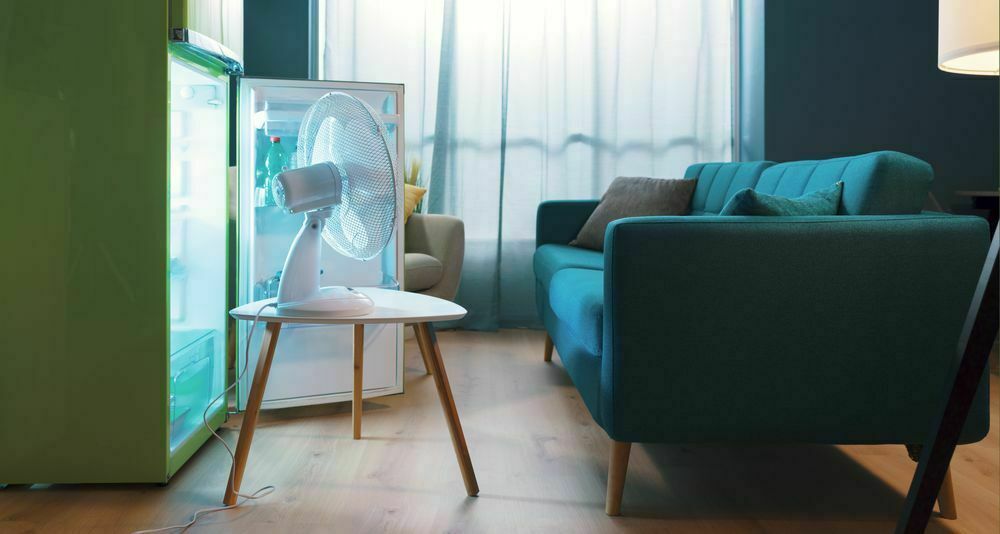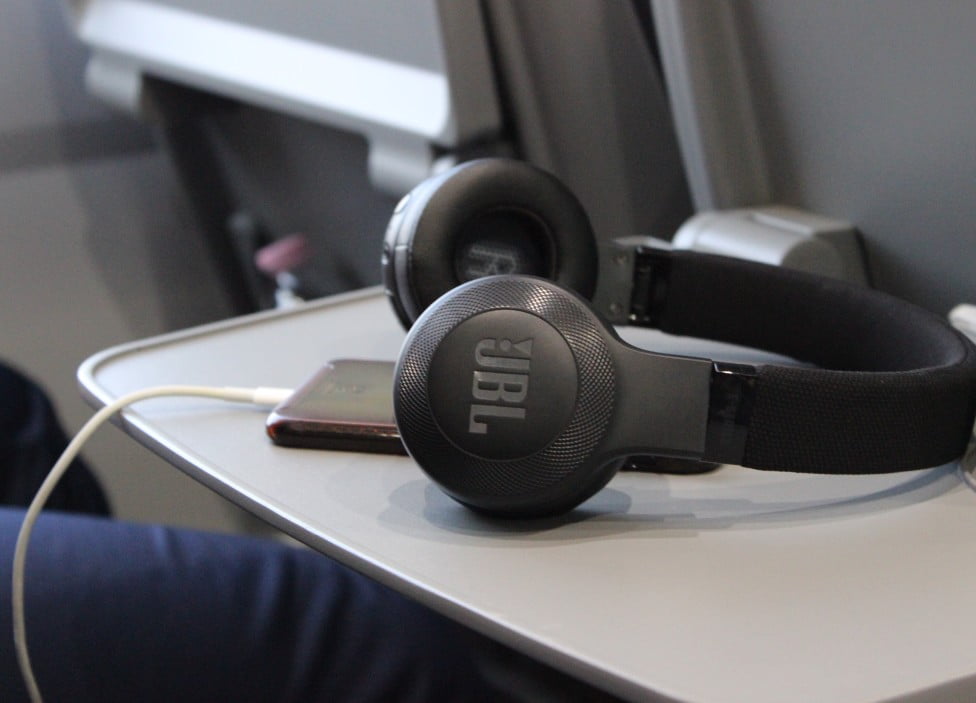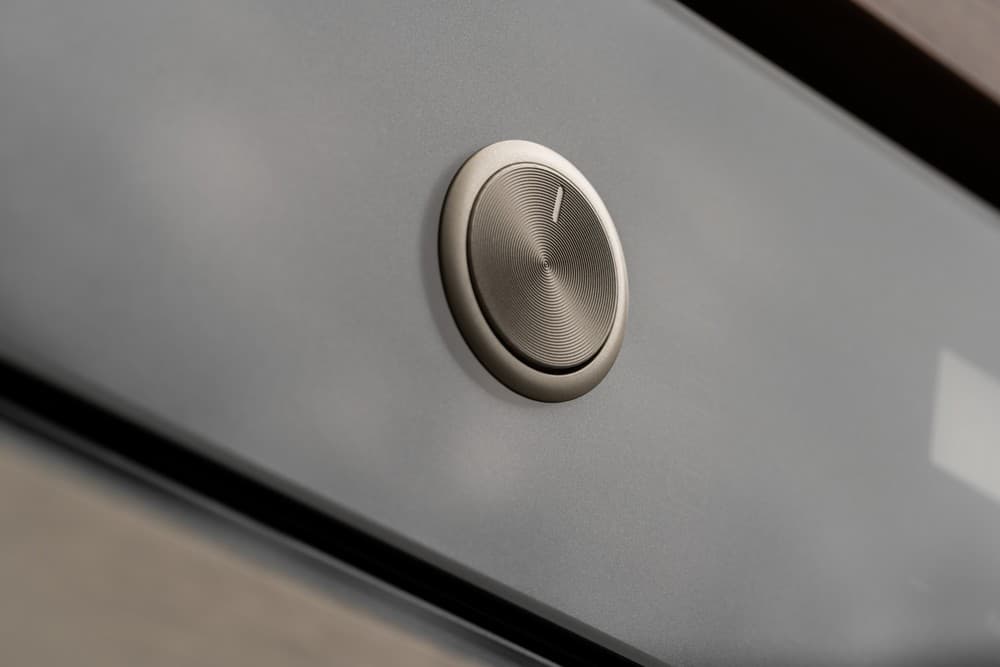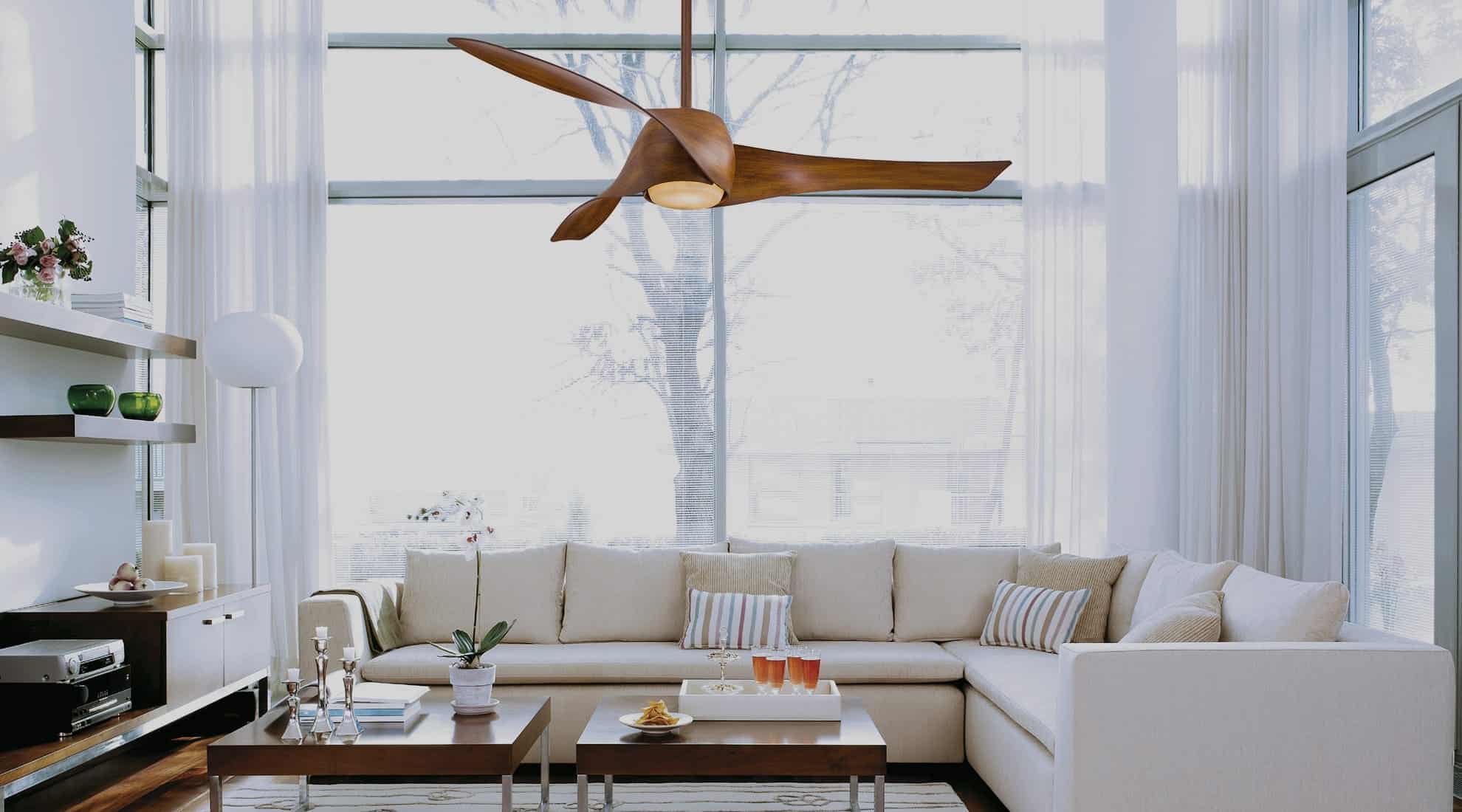We spent over 12 hours comparing nearly all of the fans on the market and determined which ones are the best fans to choose from. We considered the size of the fan in relation to the amount of air it can circulate in a room, the material and finish of its blades, its design, and its overall energy usage. To come up with this comprehensive guide, we tested over 20 models to compare their parts.
The Vornado 660 Large Whole Room Air Circulator Fan came out as our top pick for the best fan overall with its powerful vortex and stylish glide bar. We also liked the Honeywell QuietSet Whole Room Tower Fan because of its slim design and quiet cooling. Keep reading to learn more about these items and why we chose these 7 fans for you.
Top 7 Best Fans
#1 Vornado 660 Large Whole Room Air Circulator Fan
Award: TOP PICK
WHY WE LIKE IT: This fan is one of the best fans for humid weather, thanks to its powerful vortex action that can bring air up to 100 feet. It has a glide bar that can rotate the fan 90 degrees horizontally and vertically, allowing for multi-directional airflow.
- Best for humid weather
- Has a specially sized inlet air accelerator
- Contoured blades maximize the amount of air
- Loud on its highest setting
The Vornado 660’s Vortex Action circulates cool air in the entire room by mixing cooler air on the floor and hotter air near the ceiling, unlike typical fans that don’t follow a pattern. The air flow can reach 100 feet, which exceeds other fans’ reach by at least 30 feet. Its 4-speed controls are conveniently placed on top of the circulator for easy selection. On humid days, the second speed level provides ample ventilation and cool air into the room. Make sure your toddler is comfortable by using our best fan baby room.
The fan has a built-in cylindrical air duct that encloses the hot air and mixes it with the cooler air to quickly eliminate the hot temperature in an area. As the air exits the circulator, its grills straighten the airflow so that the air can travel long distances. For multidirectional airflow, the Vornado 660 moves fluidly between horizontal and vertical positions along its chrome glide. The 660 ensures comfortable, whole-room circulation while its parts are easy to maintain with its detachable grill that provides access to the fan’s blades. Vornado believes in the long-lasting quality of their Whole Room Air Circulators, backing the Vornado 660 with a 5-years of customer service. The best ventilation fans are another option.
#2 SmartDevil Portable Clip-On Stroller Fan
Award: HONORABLE MENTION
WHY WE LIKE IT: This clip-on fan from SmartDevil is an all-around powerhouse for those needing a versatile, portable fan option. Its flexible tripod design can adapt to nearly any setting, from strollers to car seats, while a rechargeable battery keeps the air flowing for up to 8 hours on a full charge.
- Flexible tripod for various setups
- Quiet operation at 40 dB, perfect for naps
- Up to 8 hours battery life on low speed
- Higher speeds may reduce battery life
The SmartDevil Stroller Fan is built with a highly flexible tripod that can be bent and secured at any angle, letting you clip it onto a stroller, desk, or even use it as a handheld fan. It’s also impressively quiet at just 40 dB, so you can keep it running during a baby’s nap without interruptions. The fan runs on either a USB connection or a 3000mAh rechargeable battery, providing up to 8 hours of operation on a single charge at low speed, making it ideal for outings or extended use.
With three speeds, you have the flexibility to adjust airflow according to the environment. Although the higher speeds can reduce battery life, the airflow remains powerful enough on low to keep you cool. This SmartDevil fan strikes the right balance between functionality and portability, especially for those looking for versatile, quiet cooling on the go.
#3 Rowenta VU5670 Turbo Silence Stand Fan
Award: BEST ENERGY SAVING
WHY WE LIKE IT: The best standing fan on this list, this fan from Rowenta is energy-efficient and has an adjustable height. It’s a standing fan that has 5 powerful speed settings that can be controlled via remote, and it comes with on-board storage for its controller.
- Very quite and very broad coverage for large rooms
- Powerful airflow
- Blades are cleaned easily
- Whisper-quiet operation
- Metal grills may gradually rust over time
- Remote can’t control head rotation
The airflow coming from this fan can reach up to 2436 cubic ft. with its five blades that measure 16 inches in diameter. It has five speed settings, including Turbo Boost for hotter days and Silent Night mode for soundless operation. Below its grill is an electronic control panel that has an 8-hour timer and an energy-saving mode that gradually decreases the airflow until it reaches its most energy-efficient setting.
The neck is adjustable from a height between 42 and 54 inches, and the direction of the airflow can be changed from static to its normal head rotation. You can also look at the best tower fans.
#4 Lasko T42950 Wind Curve Tower Fan
Award: QUITEST
WHY WE LIKE IT: One of the best fans for sleeping, the Lasko tower fan is tall enough to aim at high beds while it quietly circulates the air all over the room. The angle of its vent can also be adjusted vertically to your liking.
- Best for sleeping
- Space-saving design
- Widespread oscillation
- Collects dust and may be difficult to clean
The Lasko T42950 Wind Curve Tower Fan has three quiet speed settings including Nighttime setting, which dims its control display and sets it on High (H) for an hour, Medium (M) for another hour, and stays on Low (L) for the rest of the time until you interact with it again. It also has an energy-efficient timer that can shut off after 0.5 to 7.5 hours, and it creates just the right amount of white noise, which makes it perfect to use at night.
It is as tall as the Honeywell QuietSet Tower Fan at 42.5”, but unlike the Honeywell QuietSet Tower Fan that only swivels up to 90 degrees, this fan does a full 360-degree turn to cover the entire room. Like the Honeywell QuietSet Tower Fan, the Lasko Tower Fan comes with a multi-function remote with on-board storage that can be used from a 30-meter distance. Its oscillation and speed can be controlled with the remote, as well as the timer and the sound. The best large ceiling fans are also a great option for larger areas.
#5 AmazonBasics Oscillating Dual Blade Standing Pedestal Fan
Award: BEST QUALITY
WHY WE LIKE IT: This fan from AmazonBasics has two sets of blades that allow for maximum airflow. Although its design is very traditional, it can be controlled using a remote and shuts off automatically with its energy-saving timer.
- Very stable base and rotates quietly
- Adjustable neck
- Blades can be cleaned easily
- Loud on its highest speed setting
At 53 inches, this AmazonBasics Pedestal Fan is the tallest item on this list, and its dual-blade technology allows for horizontal and vertical air flow compared to other standing fans that can only move air horizontally. It has three speed settings and three special air flow modes. When on Sleep Mode, the fan creates a constant, soft flow. Nature Mode creates the feeling of a natural and cool breeze, and Normal Mode lets you select the speed that you prefer.
We especially like this fan because the speed and air flow settings can be adjusted with a remote control, while its height and the angle of its neck can also be adjusted to your liking. If you need an outdoor patio cooled, the best outdoor ceiling fan will help.
#6 SmartDevil USB Small Desk Fan
Award: MOST PORTABLE FAN
WHY WE LIKE IT: This compact desk fan from SmartDevil brings powerful cooling in a tiny, stylish package that fits perfectly on desks, bedside tables, and more. With a unique wood-grain design and quiet operation, this fan makes an excellent addition to any small space in need of efficient cooling.
- Compact and lightweight design
- 90° adjustable airflow
- Three quiet speed settings
- No built-in battery, USB-powered only
The SmartDevil Desk Fan proves that big things come in small packages. Weighing in at just 7 ounces, this lightweight fan is a breeze to carry and fits effortlessly in compact spaces. It rotates 90° vertically, letting you direct airflow precisely where you need it. Designed with three adjustable speed settings, it’s versatile enough to suit various cooling needs, from a light breeze to more powerful airflow.
While it’s USB-powered only, the fan easily connects to laptops, power banks, or wall adapters, providing the flexibility you need. The wood-grain base design adds a touch of modern style, and despite its small size, it provides a strong and refreshing breeze. For those looking for a compact, quiet, and effective fan, the SmartDevil Desk Fan is a reliable choice.
#7 PELONIS FZ10-19MB Quiet Tower Fan
Award: BEST ON A BUDGET
WHY WE LIKE IT: The SmartDevil Neck Fan offers a hands-free cooling experience that’s ideal for active settings, like working out, gardening, or traveling. With three speeds and up to 16 hours of battery life, it’s one of the most versatile, budget-friendly cooling solutions out there.
- Bladeless design is safe and hair-friendly
- Long-lasting 4000mAh battery
- 360° air circulation
- May be slightly heavy for sensitive necks
The SmartDevil Neck Fan brings cooling power right where you need it. This unique wearable fan is bladeless, so you won’t need to worry about long hair getting caught. It’s powered by a 4000mAh battery that provides up to 16 hours of cooling on a full charge, and its 360° airflow keeps you comfortable in every direction. With three speed settings, you can adjust it to match your cooling needs, from light air to a strong breeze for hotter environments.
While the fan’s sturdy design adds a bit of weight, it’s well worth it for long-lasting, hands-free cooling. Ideal for outdoor activities, commuting, or even relaxing at home, the SmartDevil Neck Fan is an affordable and convenient cooling solution.
Beginner’s Guide To Fans
What Exactly Is A Fan?
A fan can be described simply as a device that moves air around. Fans come in all shapes and sizes, but they all have one purpose: to move air. Some fans are small enough to fit in the palm of your hand, like a simple cooling fan. Others are large enough to cool an entire room, like a box fan. If you’re looking for something to cool your entire house at once, you may find a whole house fan useful.
STAT: Running a fan in the room with a newborn can reduce the risk of SIDS (sudden infant death syndrome) by as much as 72%, particularly in warmer rooms. (source)
How Exactly Do Fans Function?
Understanding how fans work isn’t very complicated. Most fans have three main parts: a motor, blades, and housing. The motor is the part of the fan that makes it move. It’s usually electric, although there are some battery-operated and hand-powered fans as well. The blades are the long, thin pieces of metal or plastic that make up the “fan” part of the device. They’re attached to the motor, and as the motor turns, so do the blades. The housing is the part of the fan that surrounds the blades and protects them from damage. The blades are designed to move air in a specific direction – usually either up, down, or outward. As they spin, they push the air in front of them in the desired direction. The faster the blades spin, the more air is moved. However, every fan is different, so you may want to look into how bladeless fans function or how heat-powered fans function.
Insider Tip
Is there a point where it’s too hot to run a fan? According to the New York State Department of Health, there is a point where running a fan indoors will make your body temperature rise instead of cooling you down. If the ambient temperature of your home is over 95 degrees Fahrenheit, and especially if it’s humid, your body won’t be able to sweat and dispel heat as effectively as it would at lower temperatures. It’s best to use your fan when the indoor ambient temperature is below 95.
Using A Fan
How to use a fan varies based on the type of fan. Most fans are designed to be used indoors, although there are some outdoor fans available. When using an indoor fan, it’s important to make sure that the blades are fully enclosed in the housing. This will prevent any accidents from happening. It’s also important to make sure that the fan is on a stable surface. Some fans come with a built-in base, while others may need to be placed on a table or other flat surface. You can also look into how to use a window fan if you’d rather circulate fresh air.
How Much Power Does A Fan Draw?
How much electricity a fan uses depends on the size and type of fan you have. A small desk fan will use less power than a large tower fan. The speed at which the blades are spinning will also affect how much power is used. A fan that is turned up to its highest setting will use more power than one that is set to a lower setting. You can usually find the wattage of a fan on a label on the back or bottom of the device. How much electricity a ceiling fan use depends on the model, but they are known to use between 30 and 80 watts.
What Direction Should Fans Spin In Summer And Winter?
Many people don’t realize that changing the direction your fan spins based on the season can actually be beneficial. Your fan direction in the summer vs. winter will be different. In the summer, you want the blades to spin counterclockwise. This will create a wind chill effect and make the room feel cooler. In the winter, you want the blades to spin clockwise. This will help push warm air down from the ceiling and make the room feel warmer.
Did You Know?
When were fans invented? Hand fans have been used for over 4,000 years, with their origins rooted in Ancient Egypt. Originally, it was a sacred object used in rituals and ceremonies. The fan spread around the globe from there. The first folding fan, for example, was invented in Japan sometime around 670 CE and made of strips of wood or bamboo. Fast forward several centuries, and you’ll find that the electric fan we all know and love today was invented by Dr. Schuyler Skaats Wheeler in 1886.
How Long Can You Expect A Fan To Last?
How long does a fan last? That will depend on the quality of the device and how often it’s used. A well-made fan that is used regularly can last for many years. However, a cheaply made fan that is used frequently may only last for a couple of years. If you take good care of your fan and don’t use it excessively, it should last for a long time.
Choosing A Fan
How to choose a fan requires making several considerations. What you are using it for, the size of your room, features, and price are all important factors to think about. Below are a few points for you to consider as you make your purchase.
Step 1. What Are You Using Your Fan For?
It’s important to think about whether you’re using a fan to cool your room throughout the day, circulate air in your cubicle, or quickly cool off after a workout. You should compare air circulators and fans for a variety of uses as well as compare tower fans and pedestal fans to see which one works best. You may also want to compare tower fans and box fans.
Step 2. How Big Is The Room You’re Placing The Fan?
In order to get the right size fan for your space, you need to figure out the cubic feet per minute on fans. For example, if you’re using a box fan, you’ll need to know the cubic feet per minute on box fans so that you know it will cool your room adequately. The same goes for tower fans and pedestal fans. Once you know the cubic feet per minute, you can compare it to the square footage of your room to find out how many fans you’ll need to properly circulate the air. Make sure you know how to measure your fan size before purchasing.
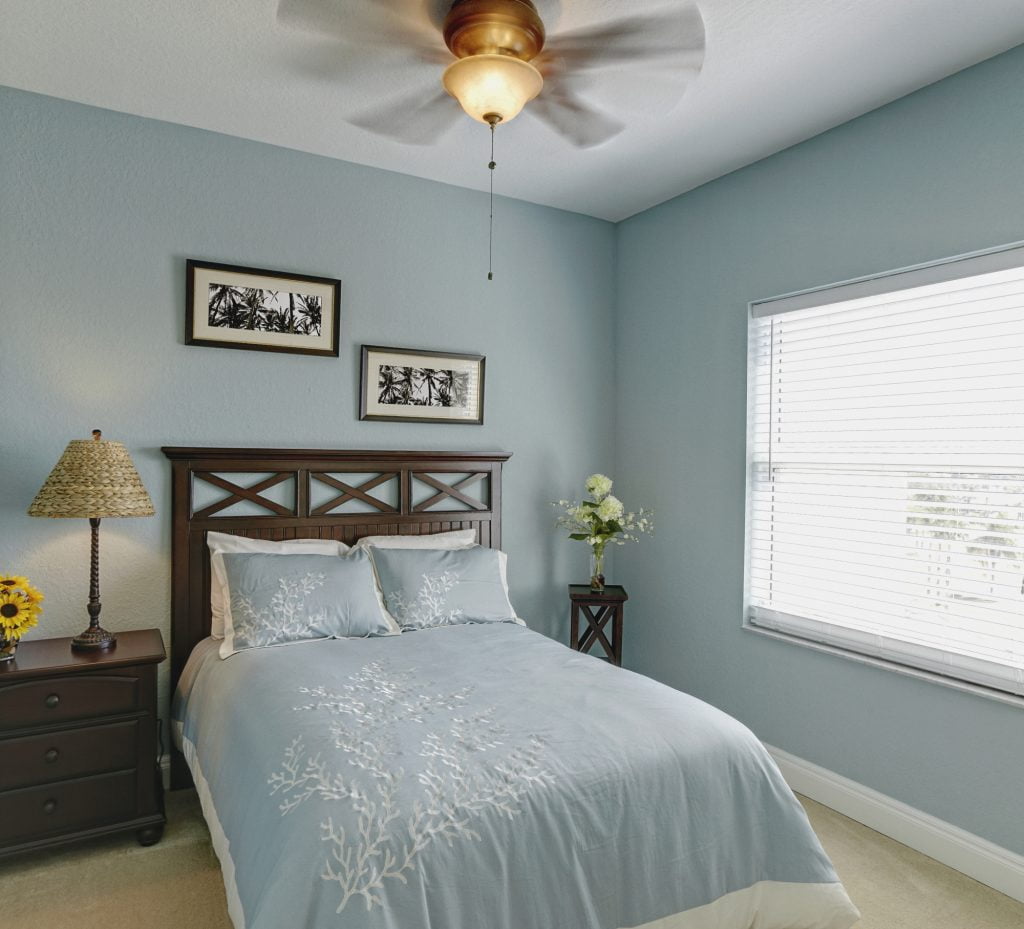
Step 3. Do You Want Any Additional Features?
You can buy fans with a plethora of features, such as oscillating fans. Some fans also come with remote control, misting kits, and other accessories. While many come with a standard two to three speeds, others will have more. You’ll also need to consider the number of blades, such as 3-blade vs 5-blade fans, as this plays a role in air circulation and speed.
3-Blade Vs 5-Blade Standing Fans
Comparing 3-blade and 5-blade standing fans, the key differences lie in their airflow intensity, noise levels, and energy efficiency. Three-blade fans offer stronger, more focused airflow at higher speeds but tend to be noisier.
In contrast, five-blade fans deliver a softer, more evenly spread breeze at lower speeds, with quieter operation. The number of blades impacts the fan’s performance, with 3-blade fans generally being more energy-efficient. The choice depends on personal preferences for airflow strength and noise.
Metal Blade Vs Plastic Blade Fans
The comparison between metal blade fans and plastic blade fans centers on their durability, weight, noise level, and cost-effectiveness. Metal blades are generally more durable and stable, making them ideal for high-speed operation, but they are heavier and can be noisier.
Plastic blades, being lighter, offer quieter operation and are more cost-effective, but they may not last as long as metal blades. The choice between metal and plastic fans largely depends on individual requirements for durability, noise preference, and budget considerations.
Step 4. How Much Should You Expect To Spend?
When it comes to price, you get what you pay for. Fans can range in price from $20 to $200. The more expensive fans will usually have more features and be made of higher quality materials. However, this doesn’t mean that the cheapest fan won’t do the job. You just need to weigh your options. Also, consider whether the A/C or a fan uses more electricity.
Step 5. Are There Alternatives You Were Considering?
Comparing fans and air conditioners will give you a better idea of which one is right for you. Energy costs, health benefits, and noise levels are all important factors to think about. While both fans and air conditioners can cool your home, they do it in different ways. Air conditioners work by drawing heat out of the air and releasing it outside. Fans, on the other hand, circulate the air in your home and create a wind chill effect. There are also models that have extra features like a built-in heater or air purifier, so you don’t have to buy a separate machine.
STAT: An air conditioner can cost around 36 cents an hour. In comparison, a ceiling fan can cost as little as just a penny an hour. (source)
Types Of Fans
There are many different types of fans on the market. Some are designed to cool a room, while others are made to circulate air in a small space. They come in a variety of sizes, shapes, and colors. You can get styles that match your existing decor or something that stands out, like retro designs or models with a bladeless design.
- Ceiling Fans
- Ceiling fans, designed to circulate air and improve room comfort, come in various sizes to suit different room dimensions.
- Factors to consider include blade length, ceiling height, wall clearance, number of blades, mounting options, weatherproof ratings for outdoor use, control options (manual or remote), and additional accessories like lighting kits. The right cei ling fan can significantly enhance room comfort and aesthetics.
- Tower Fans
- Quiet Ceiling Fans
- Floor Fans
- Window Fans
- What is a Window Fan?
- A window fan is a type of fan designed to be placed in the frame of a window. Its primary purpose is to circulate air from outside to inside the room or vice versa.
- Top Features to Consider
- If you’re considering buying a window fan, it’s important to know the key features that make a good choice. Look for fans with enough power to circulate air effectively, adjustable speeds, and features like expandable side panels for different window sizes. Noise level is also crucial; a balance between power and quiet operation is ideal.
- Reversible airflow is a useful feature for versatility, and the number of fans in a unit can affect performance and suitability for your space. User-friendly controls, including intuitive interfaces and possibly built-in sensors, add to the convenience.
- Box Fan Vs Window Fan
- The comparison between box fans and window fans addresses their cooling efficiency, airflow, and noise. Box fans are versatile, suitable for direct cooling and drying, but don’t lower room temperature, whereas window fans, often featuring two fans for intake and exhaust, can lower room temperature under the right conditions.
- Box fans typically have stronger airflow but may be noisier, while window fans allow outside noise but have the advantage of cooling the room more effectively. The choice depends on the user’s specific cooling needs and noise tolerance.
- What is a Window Fan?
- Pedestal Fans
- Desk Fans
- Bladeless Fans
- Quiet Window Fans
- Fans For Baby Room
- Fans For Sleeping
- Modern Ceiling Fans
- Wall Mount Fans
- Small Fans
Fans For The Outdoors
- Outdoor Ceiling Fans
- Neck Fans
- Camping Fans
- Travel Fans
- Outdoor Wall Mount Fans
- Outdoor Floor Fans
Fans For Special Applications
- Cooling Fans
- Stroller Fans
- Garage Fans
- A garage fan is designed to effectively circulate air in a garage, a space that often becomes hot and stuffy.
- Key considerations for a garage fan include performance and power to ensure adequate airflow, durability for longevity, safety, adjustability, speed for tailored airflow, and noise level, which is less critical in a typically noisy garage environment.
- Battery Operated Fans
- Misting Fans
- A misting fan combines air circulation with a fine spray of water, enhancing cooling, especially in outdoor settings.
- Important features for these fans include oscillation for wide area coverage, variable speed modes for different weather conditions, size and run time for portability, and water source, with larger fans often using a garden hose and smaller ones a refillable water container.
- Quiet Pedestal Fans
- Handheld Fans
- Clip-On Fans
- High-Velocity Fans
- USB Fans
- Car Fans
- Garage Gym Fans
Top Fan Brands
- Vornado Fans
- Honeywell Fans
- Lasko Fans
- Hunter Fans
- Holmes Fans
Owning A Fan
Installing A Ceiling Fan
Installing a ceiling fan involves connecting the wires and mounting it to the ceiling. Wiring a ceiling fan can be tricky, but there are only a few wires that need to be connected. If you’re not comfortable, hire an electrician. However, it’s also possible to learn how do i properly install multiple remote-controlled fans, which is very convenient.
Did You Know?
Is it bad to sleep with a fan on? While sleeping with a fan on isn’t bad per se, for some people, it can cause your mouth, nose, and throat to dry out during the night. As a result, you may wake up with a headache, sore throat, or other sinus issues. In some cases, sleeping with a fan can cause snoring!
Positioning Your Fans Properly In A Room
To effectively cool your space, you need to make sure you position your fan to cool the room, especially in a larger space. Circulating air with fans is essential to keeping cool in the summertime. The best way to do this is by using ceiling fans and floor fans in conjunction with each other. Properly positioning your fans will ensure that the air circulates efficiently and evenly throughout the room. You can also make your fan blow colder air by positioning it in front of a floor vent.
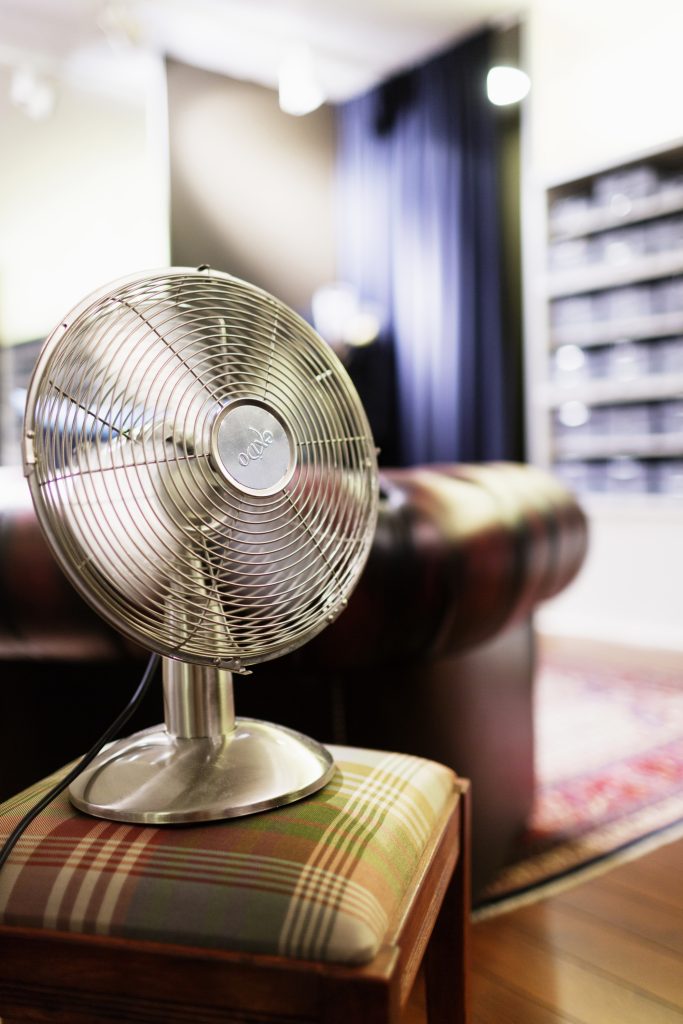
Changing Your Fan’s Speed
Most fans have different speed settings that you can choose from. Depending on how hot it is, you may want to change the speed of your fan. A higher setting will circulate air more quickly, while a lower setting will create a gentler breeze. Most models will have fan speed options of low, medium, and high. If you are only concerned about quiet performance, the lowest setting will be the quietest for your average fan. However, there are excellent options at an affordable price that can use maximum speed and stay whisper quiet, like a Dreo Tower Fan.
Fixing Different Problems With Your Fan
Like with anything else, you may eventually experience problems with your fan, some of which can be annoying but might not be very hard to fix. Fixing a squeaking ceiling fan can be as easy as tightening the screws that hold it in place. You can also quiet down your fan by cleaning it. Fixing a fan that won’t spin can be more difficult, but it’s usually just a matter of finding the right setting.
Did You Know?
Why does sleeping with a fan on make your throat hurt? Sleeping with a fan blowing on your overnight creates a constant stream of air that dries out your nasal passages and throat. This is especially true if you sleep with your mouth open. As a result, you’ll wake up in the morning with a sore throat.
Cleaning A Fan
Your fan will eventually accumulate dust, which can be unsightly and even affect its performance. To clean your fan, you’ll need to remove it from the ceiling and then use a soft brush or cloth to wipe down the blades. You can also use a vacuum with a soft brush attachment to reach tight spaces. Cleaning tower fans might be a bit different than cleaning the blades on a fan, but you might also want to look into cleaning a fan using a plastic bag to make it easy.
Find Out Why Your Fan Is Making Noise
A noisy fan can be really annoying, but there’s usually a fix. Find out why your ceiling fan is making noise by looking for any loose screws. Find out why your standing fan is making noise by checking to see if the blades are unbalanced. You can also try oiling the motor to see if that helps. Once you find the culprit, you can stop your fan from making so much noise.
Did You Know?
How long can you continuously run an electric fan? Though not recommended, you can theoretically run your fan every day, all day. However, this will cause a few issues. For example, ceiling fans that run for more than 8 hours a day run the risk of causing damage or creating a fire in your home. Regardless of fan type, it will also shorten the life of your fan, and you’ll have to buy a new one much sooner than if you turned it off for a few hours a day.
Troubleshooting Your Fan
Troubleshooting why your fan stopped working could save you a lot of money buying a new fan. If your fan doesn’t seem to be working right, you can also troubleshoot a fan only blowing hot air. Sometimes, something as simple as resetting the breaker can get your fan working again.


